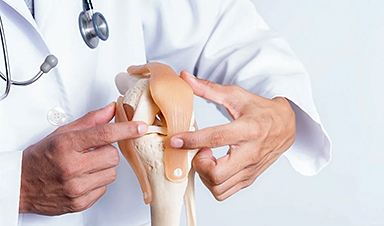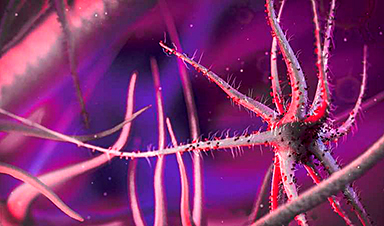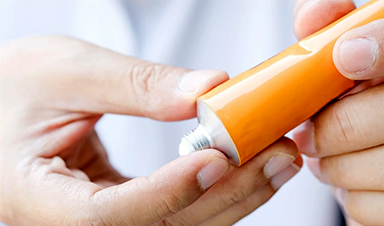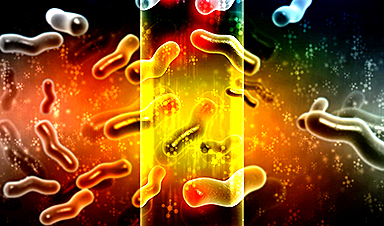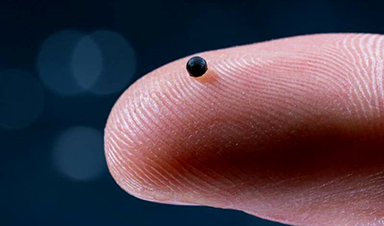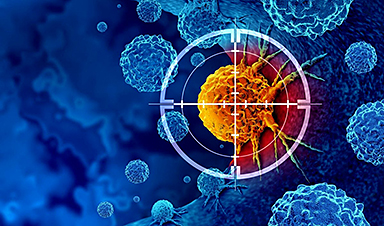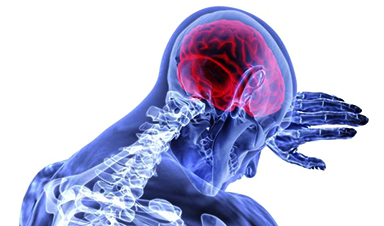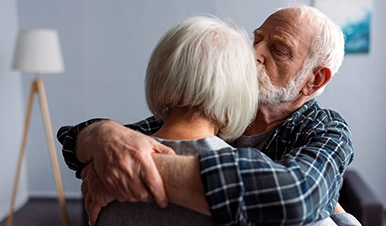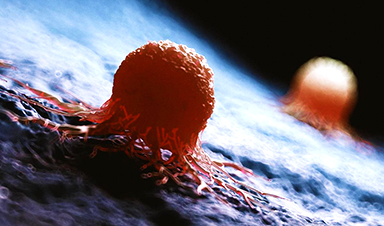A recent article in Engineering describes the development of a protein-based nanocomposite hydrogel designed to deliver two therapeutic agents—dexamethasone (Dex) and kartogenin (KGN)—to support cartilage repair. The hydrogel is engineered to modulate immune responses and promote the formation of cartilage tissue through controlled drug release.
Background
Cartilage has a limited ability to repair itself due to its avascular nature, which restricts nutrient flow and cell migration. Various scaffold materials, including natural polymers and composites, have been tested for cartilage repair. However, many of these face limitations such as poor mechanical strength, weak cell signaling, and inconsistent drug delivery.
Hydrogels are promising in this context because they are hydrophilic, biodegradable, and can mimic the properties of natural tissue. Designing hydrogels that coordinate immune regulation and tissue regeneration, however, remains a complex challenge.
Dexamethasone is a corticosteroid with strong anti-inflammatory effects. It can shift macrophages toward an M2 phenotype, which supports tissue repair. Kartogenin is a small molecule known to stimulate mesenchymal stem cells (MSCs) to differentiate into chondrocytes, enhancing cartilage formation. Combining both agents in a single hydrogel aims to first reduce inflammation and then encourage cartilage regeneration.
The Current Study
Researchers created a silk fibroin-based nanocomposite hydrogel loaded with Dex and KGN. KGN was covalently linked to silk proteins to form nanospheres (SPNs) that release the drug over time. Dex was incorporated non-covalently via hydrogen bonding with the silk matrix, forming a Dex-HLC complex intended for rapid release.
The hydrogel network was stabilized using enzymatic crosslinking with transglutaminase, which promoted covalent bonding between amino acid residues in the silk fibroin. This structure allowed for staged drug release: Dex would be released early to manage inflammation, and KGN would be released gradually during the tissue regeneration phase.
The hydrogel’s physical and chemical properties—such as strength, degradation rate, and drug release behavior—were assessed through spectroscopy, degradation studies, and release tests. Cytocompatibility was evaluated using cultures of MSCs and macrophages to monitor adhesion, growth, and differentiation.
An in vivo rabbit model of cartilage defect was used to test the hydrogel’s repair performance. After implantation, tissue samples were evaluated through histological staining (H&E, Safranin O), immunohistochemistry for inflammation and cartilage markers, and micro-CT imaging to assess cartilage and bone formation.
Results and Discussion
The hydrogel formed a stable and elastic structure with mechanical properties similar to native cartilage. It degraded at a rate aligned with typical cartilage healing timelines. In early-stage testing, Dex was released quickly and reduced inflammation, as shown by lower levels of cytokines such as TNF-α and IL-6. Macrophage analysis showed a shift from the M1 (inflammatory) to M2 (anti-inflammatory) phenotype after Dex exposure.
KGN was released over a longer period, supporting the differentiation of MSCs into chondrocytes. This was confirmed by increased expression of markers like type II collagen, SOX-9, and aggrecan. At the same time, expression of hypertrophy-associated markers like RUNX2 decreased, while RUNX1 expression increased, indicating stable chondrogenic differentiation and reduced risk of cartilage overgrowth.
In the rabbit model, defects treated with the hydrogel showed significant formation of hyaline-like cartilage, with organized extracellular matrix and tissue structures resembling native cartilage. These regions showed higher levels of cartilage matrix components and new bone formation compared to control groups. Immunohistochemical staining revealed reduced inflammatory signaling and increased collagen type II levels, confirming tissue regeneration with limited inflammation and hypertrophy.
Conclusion
This study describes a dual-drug nanocomposite hydrogel for cartilage repair that delivers Dex for early inflammation control and KGN for long-term cartilage regeneration. The material showed favorable mechanical performance, cell compatibility, and regenerative effects in a rabbit cartilage defect model. The combination of immune modulation and support for chondrogenesis represents a comprehensive strategy for tissue engineering.
While initial results are encouraging, further research is needed to refine drug delivery profiles, evaluate long-term outcomes, and confirm safety in larger animal models. This approach highlights the potential of responsive hydrogel systems in addressing challenges in cartilage repair and osteoarthritis treatment.
Journal Reference
Lei, H., Fan, D. (2025). Dual drug delivery nanocomposite hydrogel for cartilage repair: immunomodulation and chondrogenesis. Engineering. DOI: 10.1016/j.eng.2025.05.010, https://www.sciencedirect.com/science/article/pii/S2095809925002875?via%3Dihub
News
Novel mRNA therapy curbs antibiotic-resistant infections in preclinical lung models
Researchers at the Icahn School of Medicine at Mount Sinai and collaborators have reported early success with a novel mRNA-based therapy designed to combat antibiotic-resistant bacteria. The findings, published in Nature Biotechnology, show that in [...]
New skin-permeable polymer delivers insulin without needles
A breakthrough zwitterionic polymer slips through the skin’s toughest barriers, carrying insulin deep into tissue and normalizing blood sugar, offering patients a painless alternative to daily injections. A recent study published in the journal Nature examines [...]
Multifunctional Nanogels: A Breakthrough in Antibacterial Strategies
Antibiotic resistance is a growing concern - from human health to crop survival. A new study successfully uses nanogels to target and almost entirely inhibit the bacteria P. Aeruginosa. Recently published in Angewandte Chemie, the study [...]
Nanoflowers rejuvenate old and damaged human cells by replacing their mitochondria
Biomedical researchers at Texas A&M University may have discovered a way to stop or even reverse the decline of cellular energy production—a finding that could have revolutionary effects across medicine. Dr. Akhilesh K. Gaharwar [...]
The Stunning New Push to Protect the Invisible 99% of Life
Scientists worldwide have joined forces to build the first-ever roadmap for conserving Earth’s vast invisible majority—microbes. Their new IUCN Specialist Group reframes conservation by elevating microbial life to the same urgency as plants and [...]
Scientists Find a Way to Help the Brain Clear Alzheimer’s Plaques Naturally
Scientists have discovered that the brain may have a built-in way to fight Alzheimer’s. By activating a protein called Sox9, researchers were able to switch on star-shaped brain cells known as astrocytes and turn them into [...]
Vision can be rebooted in adults with amblyopia, study suggests
Temporarily anesthetizing the retina briefly reverts the activity of the visual system to that observed in early development and enables growth of responses to the amblyopic eye, new research shows. In the common vision [...]
Ultrasound-activated Nanoparticles Kill Liver Cancer and Activate Immune System
A new ultrasound-guided nanotherapy wipes out liver tumors while training the immune system to keep them from coming back. The study, published in Nano Today, introduces a biodegradable nanoparticle system that combines sonodynamic therapy and cell [...]
Magnetic nanoparticles that successfully navigate complex blood vessels may be ready for clinical trials
Every year, 12 million people worldwide suffer a stroke; many die or are permanently impaired. Currently, drugs are administered to dissolve the thrombus that blocks the blood vessel. These drugs spread throughout the entire [...]
Reviving Exhausted T Cells Sparks Powerful Cancer Tumor Elimination
Scientists have discovered how tumors secretly drain the energy from T cells—the immune system’s main cancer fighters—and how blocking that process can bring them back to life. The team found that cancer cells use [...]
Very low LDL-cholesterol correlates to fewer heart problems after stroke
Brigham and Women's Hospital's TIMI Study Group reports that in patients with prior ischemic stroke, very low achieved LDL-cholesterol correlated with fewer major adverse cardiovascular events and fewer recurrent strokes, without an apparent increase [...]
“Great Unified Microscope” Reveals Hidden Micro and Nano Worlds Inside Living Cells
University of Tokyo researchers have created a powerful new microscope that captures both forward- and back-scattered light at once, letting scientists see everything from large cell structures to tiny nanoscale particles in a single shot. Researchers [...]
Breakthrough Alzheimer’s Drug Has a Hidden Problem
Researchers in Japan found that although the Alzheimer’s drug lecanemab successfully removes amyloid plaques from the brain, it does not restore the brain’s waste-clearing system within the first few months of treatment. The study suggests that [...]
Concerning New Research Reveals Colon Cancer Is Skyrocketing in Adults Under 50
Colorectal cancer is striking younger adults at alarming rates, driven by lifestyle and genetic factors. Colorectal cancer (CRC) develops when abnormal cells grow uncontrollably in the colon or rectum, forming tumors that can eventually [...]
Scientists Discover a Natural, Non-Addictive Way To Block Pain That Could Replace Opioids
Scientists have discovered that the body can naturally dull pain through its own localized “benzodiazepine-like” peptides. A groundbreaking study led by a University of Leeds scientist has unveiled new insights into how the body manages pain, [...]
GLP-1 Drugs Like Ozempic Work, but New Research Reveals a Major Catch
Three new Cochrane reviews find evidence that GLP-1 drugs lead to clinically meaningful weight loss, though industry-funded studies raise concerns. Three new reviews from Cochrane have found that GLP-1 medications can lead to significant [...]
